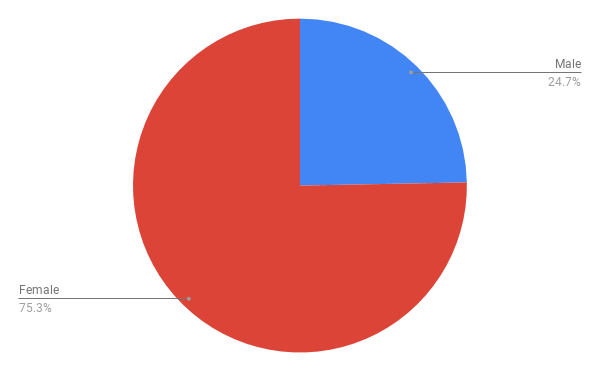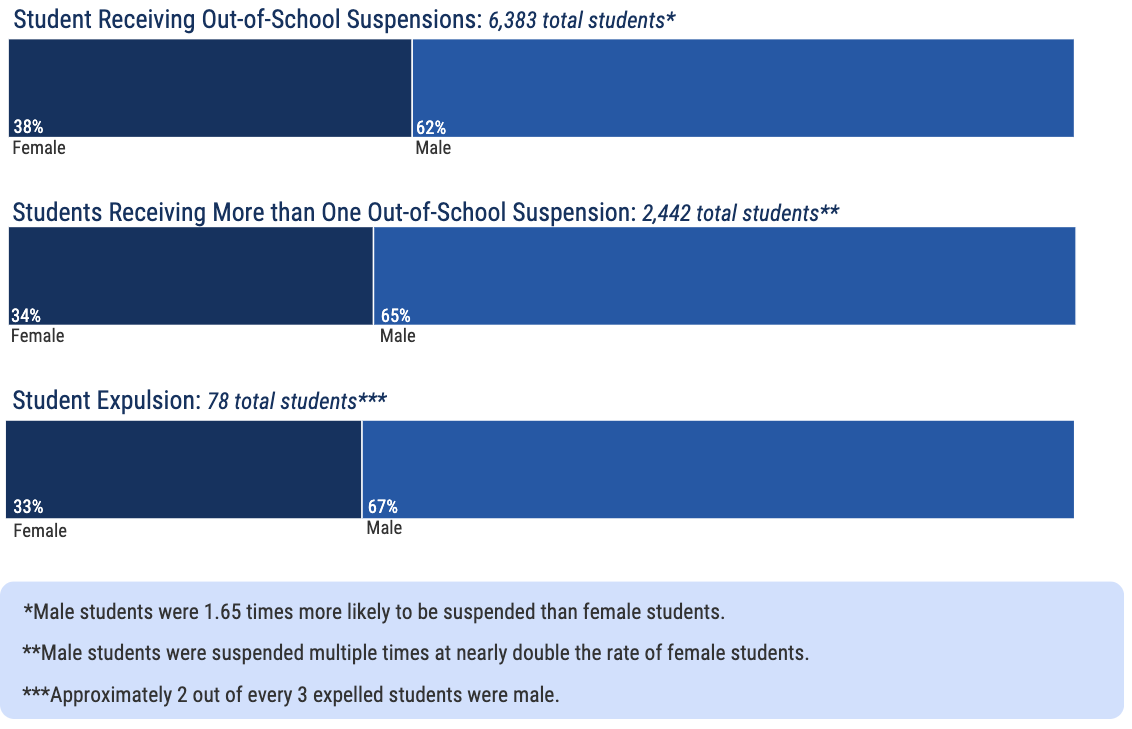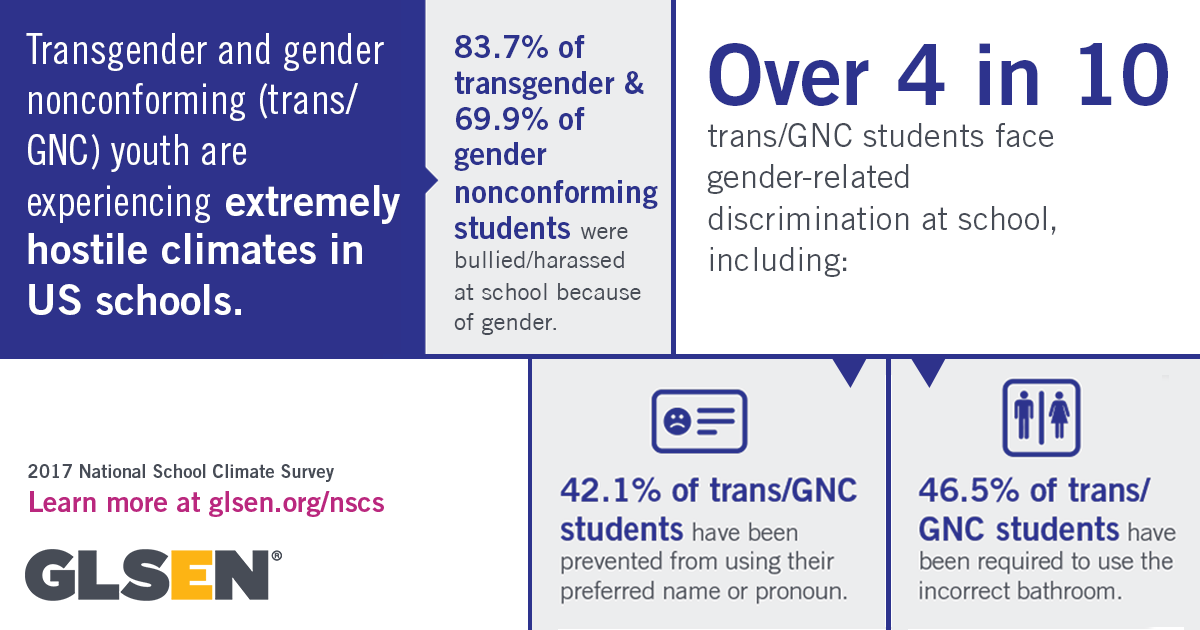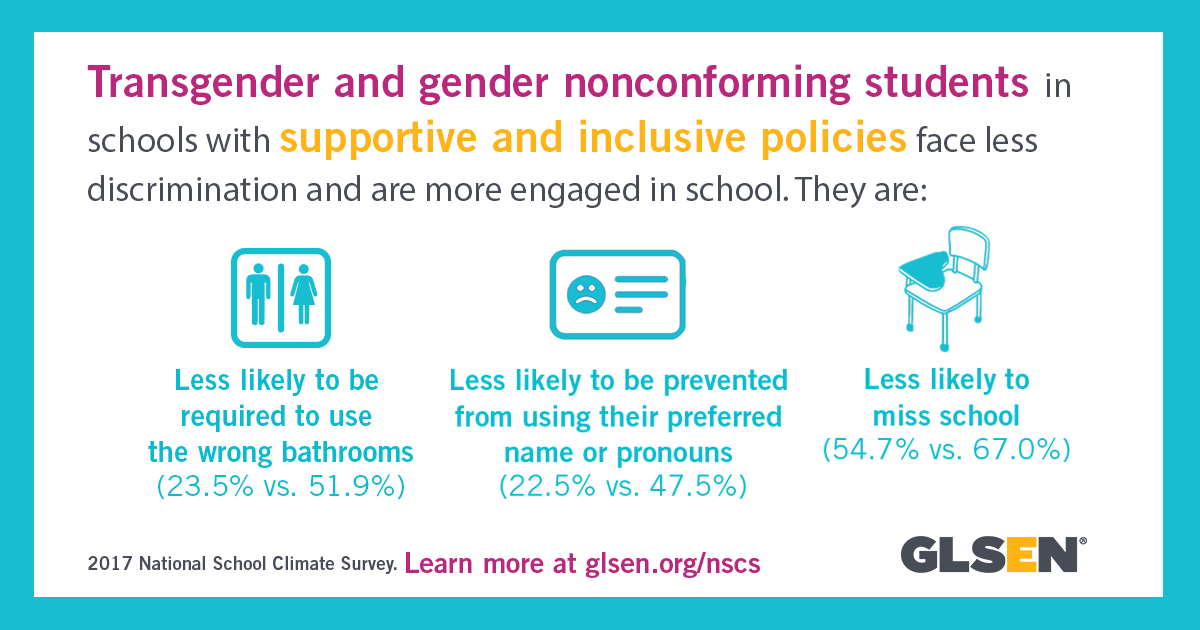
Information about students in DC is easily available, but information about the teachers is not. The following pages are designed to inform you about the demographic makeup of teachers within the District of Columbia.
Teacher Demographics
- Even though boys of color make up 45% of all public and charter school students, only 16% of public and charter school teachers are men of color [1].
- Even though female students make up about 50% of all public and charter school students, about 75% of teachers identify as being a woman [1].
- DCPS and public charter schools do not have records of transgender and gender-nonconforming students or teachers.
Demographics by Gender: DCPS & PCS

DC PUBLIC SCHOOLS

DC PUBLIC Charter SCHOOLS

*Charter schools are not required to report this information.
"When eighth graders had a female teacher instead of a male one, boys fell behind girls by the equivalent of three and a half months of learning."
-Claire Cain Miller (The New York Times)
PROBLEMS FOR OUR STUDENTS
- Boys' literacy proficiency scores are significantly lower than girls.
- About 1-in-4-girls will not graduate high school.
- Boys are disproportionately suspended from school.
Disproportionality of Disciplinary Action by Gender

State Standardized Assessment Results: PARCC (SY 2018-19)

2019 Four-Year Cohort Graduation Rate by Gender: DCPS & PCS

NATIONAL RESEARCH ON TRANSGENDER AND GENDER-NONCONFORMING STUDENTS & TEACHERS:
Nationally, transgender and gender-nonconforming (GNC) students do not feel safe in their schools. Having a representative teaching staff that address LGBTQIA+ issues positively can help create a safe environment for transgender and gender-nonconforming students.

Approximately 75 percent of
transgender students feel unsafe in
their current schools [7].

About 30 percent of transgender and GNC students who heard negative remarks about gender expression reported that school staff members were present all or most of the time when those comments were made [8].
Having a representative teaching staff is important because when LGBTQIA+ issues are positively represented in a school's curriculum:
- Negative remarks about transgender people drops 40 percent [7].
- Negative remarks about gender expression drops almost 25 percent [7].
- Victimization based on gender expression drops almost 50 percent [7].
- Feelings of safety regarding gender expression improves by over 30 percent [7].

Limitations in Local Research:
Limited research is available in Washington, DC regarding transgender and gender-nonconforming students and teachers. Here are some resources that are available:
- DCPS: Transgender and Gender-Nonconforming Policy Guidance
- DCPS: Transgender and Gender-Nonconforming Policy Guidance: Brochure
- DCPS: LGBTQ Family Resource Guide
- DCPCSB: Guidance: Ensuring a LGBTQ-Inclusive School Climate
No data is available on the achievement data of transgender and gender-nonconforming youth in the District of Columbia.
Transgender & Gender-Nonconforming Students

Transgender & Gender-Nonconforming Teachers

Sources:
- District of Columbia Teacher Workforce Report. (2019, October). Retrieved from https://osse.dc.gov/sites/default/files/dc/sites/osse/publication/attachments/DC Educator Workforce Report 10.2019.pdf.
- DCPS Fast Facts 2017-18. (2018). Retrieved from https://dcps.dc.gov/sites/default/files/dc/sites/dcps/publication/attachments/DCPS%20Fast%20Facts%202017-18.pdf.
- Office of the State Superintendent of Education. (2019). 2018-19 Adjusted Cohort Graduation Rate. [online] Available at: https://osse.dc.gov/publication/2018-19-adjusted-cohort-graduation-rate.
- OSSE NGA Web Report. (2019). Retrieved from http://results.osse.dc.gov/state/DC.
- Office of the State Superintendent of Education. (2019). State of Discipline: 2017-18 School Year. [online] Available at: https://osse.dc.gov/sites/default/files/dc/sites/osse/page_content/attachments/2017-18%20School%20Year%20Discipline%20Report.pdf.
- Cain Miller, C. (2018). Does Teacher Diversity Matter in Student Learning?. Retrieved from https://www.nytimes.com/2018/09/10/upshot/teacher-diversity-effect-students-learning.html.
- Office of Youth Engagement. (2015). Transgender and Gender-Nonconforming Policy Guidance. Retrieved from https://dcps.dc.gov/sites/default/files/dc/sites/dcps/publication/attachments/DCPS%20Transgender%20Gender%20Non%20Conforming%20Policy%20Guidance.pdf.
- Kosciw, J., Greytak, E., Zongrone, A., Clark, C., & Truong, N. (2017). The 2017 National School Climate Survey: The Experiences of Lesbian, Gay, Bisexual, Transgender, and Queer Youth in Our Nation’s Schools. Retrieved from https://www.glsen.org/sites/default/files/GLSEN-2017-National-School-Climate-Survey-NSCS-Full-Report.pdf.
- School Climate for Transgender Students. (2015). Retrieved from https://assets2.hrc.org/welcoming-schools/documents/WS_School_Climate_for_Transgender_Students_Data.pdf.
